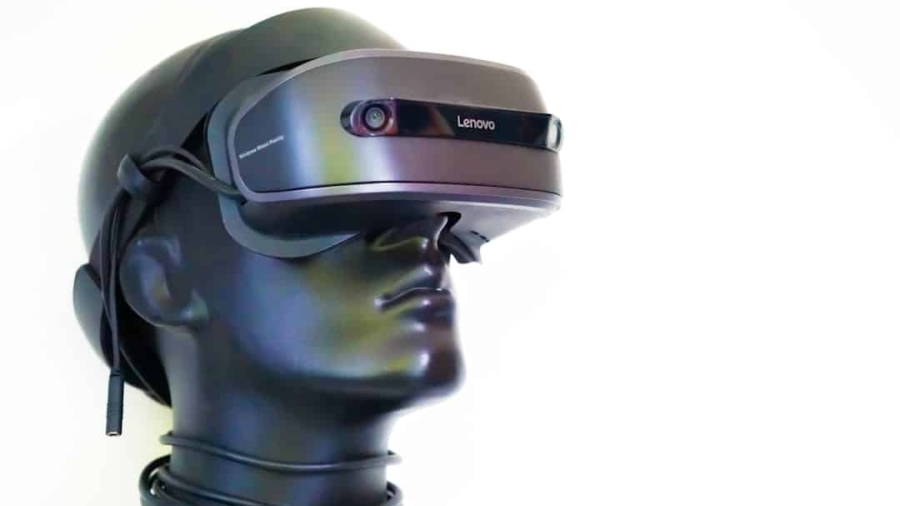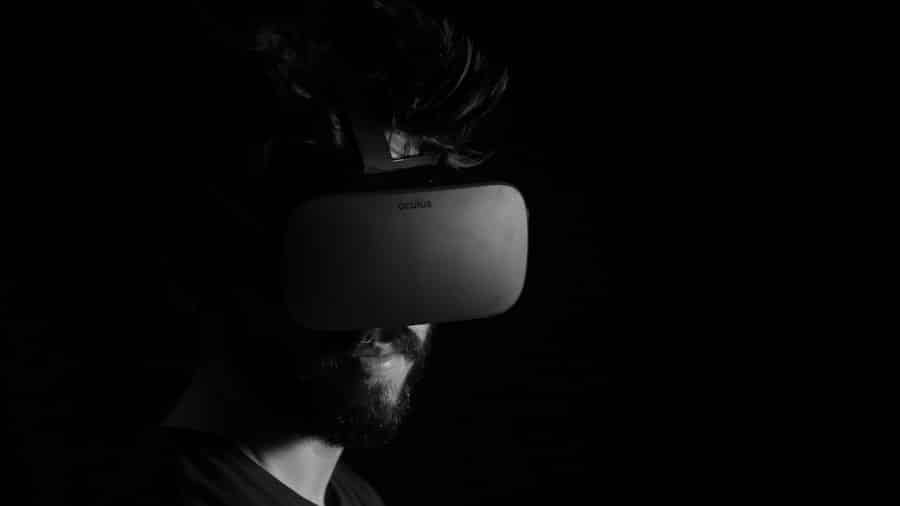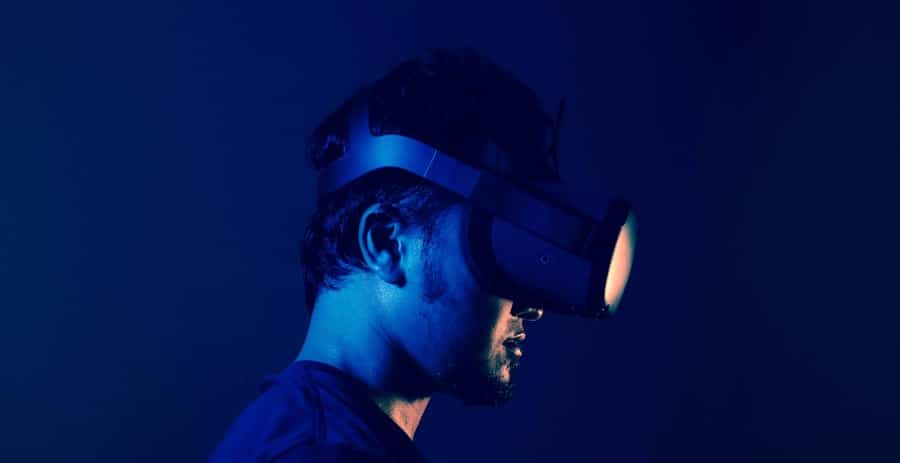Virtual reality (VR) has emerged as a transformative technology that immerses users in computer-generated environments, allowing them to interact with these spaces in ways that feel remarkably real.
This technology has found applications across various fields, including gaming, education, healthcare, and notably, space exploration.
The ability to simulate complex environments and scenarios makes VR an invaluable tool for scientists and engineers working in the aerospace sector. The evolution of virtual reality has been marked by significant advancements in graphics, processing power, and user interface design. Early VR systems were often cumbersome and limited in their capabilities, but modern iterations offer high-resolution visuals and responsive controls that enhance the immersive experience.
As a result, VR is not just a novelty; it is becoming an essential component in training, research, and mission planning within the realm of space exploration. By creating realistic simulations of extraterrestrial environments, VR enables researchers to visualize and analyze data in ways that were previously unimaginable.
Key Takeaways
- Virtual reality (VR) is an immersive technology that simulates a realistic environment, often experienced through a head-mounted display.
- VR is being used in space exploration to train astronauts, simulate space environments, and plan for future missions to Mars and beyond.
- Simulating space environments in VR allows scientists and engineers to test equipment and conduct experiments in a safe and controlled environment.
- VR training for astronauts can help them practice complex tasks and emergency procedures, improving their readiness for space missions.
- While VR offers many advantages in space exploration, such as cost-effective training and realistic simulations, it also has limitations, such as potential motion sickness and limited sensory feedback.
The Use of Virtual Reality in Space Exploration
Enhancing Mission Planning and Design
One of the most significant uses of VR is in mission planning and design. Engineers and scientists can create detailed simulations of spacecraft and planetary surfaces, allowing them to test various scenarios before actual missions take place. For instance, NASA has utilized VR to model the Martian landscape, enabling teams to visualize rover paths and identify potential hazards. This pre-mission analysis is crucial for ensuring the safety and success of space missions.
Fostering Public Engagement and Education
Moreover, VR serves as a powerful tool for public engagement and education. By providing immersive experiences that simulate space travel or planetary exploration, organizations can inspire interest in science and technology among students and the general public. For example, virtual reality experiences that allow users to “walk” on the Moon or Mars can spark curiosity about space science and encourage future generations to pursue careers in STEM fields.
Inspiring Future Generations
This educational aspect of VR not only enhances understanding but also fosters a sense of connection to the vastness of space. By providing an immersive and interactive experience, VR can inspire a new generation of space enthusiasts and scientists, driving innovation and advancing our understanding of the universe.
Simulating Space Environments in Virtual Reality
Creating accurate simulations of space environments is a complex task that requires meticulous attention to detail. Virtual reality allows scientists to replicate the unique conditions found in outer space, such as microgravity, extreme temperatures, and radiation exposure. By using advanced modeling techniques, developers can create realistic representations of celestial bodies like Mars or the Moon, complete with their geological features and atmospheric conditions.
These simulations can be used for a variety of purposes, including scientific research, mission planning, and astronaut training. One notable example is the use of VR to simulate the surface of Mars for NASA’s Mars missions. Researchers have developed detailed 3D models based on data collected from orbiters and rovers on the Martian surface.
These models allow scientists to explore potential landing sites virtually, assessing factors such as terrain stability and accessibility for rovers. Additionally, VR simulations can help researchers visualize geological formations and analyze data collected from previous missions, leading to new insights about the planet’s history and potential for past life.
Training Astronauts with Virtual Reality
Training astronauts is a rigorous process that requires extensive preparation for the challenges they will face in space. Virtual reality has revolutionized this training by providing immersive experiences that closely mimic real-life scenarios. Astronauts can practice operating spacecraft systems, conducting experiments, and responding to emergencies in a controlled environment that replicates the conditions they will encounter during their missions.
This hands-on approach enhances learning retention and builds confidence among trainees. For instance, NASA has implemented VR training modules that allow astronauts to familiarize themselves with the International Space Station (ISS) before their missions. Trainees can navigate through the station’s modules, practice conducting repairs, and even simulate spacewalks—all within a virtual environment.
This type of training not only prepares astronauts for their specific roles but also fosters teamwork and communication skills essential for successful missions. The ability to rehearse complex tasks in a risk-free setting significantly reduces the likelihood of errors during actual space operations.
Advantages and Limitations of Virtual Reality in Space Exploration
The advantages of virtual reality in space exploration are numerous. One of the most significant benefits is the ability to conduct training and simulations without the risks associated with real-life scenarios. Astronauts can practice emergency procedures or complex maneuvers without jeopardizing their safety or that of their crew members.
Additionally, VR allows for repeated practice of specific tasks until proficiency is achieved, which is particularly important for high-stakes environments like space missions.
While VR technology has advanced significantly, it still cannot fully replicate the physical sensations experienced in space, such as weightlessness or the psychological effects of isolation during long-duration missions.
Furthermore, the cost of developing high-quality VR simulations can be substantial, which may limit access for some organizations or projects. Additionally, there is a learning curve associated with using VR technology; not all astronauts may feel comfortable or adept at navigating virtual environments initially.
Virtual Reality in Mars Missions
Mars missions represent one of the most ambitious endeavors in space exploration, requiring meticulous planning and execution. Virtual reality plays a crucial role in preparing for these missions by allowing scientists and engineers to visualize Martian landscapes and simulate rover operations. For example, NASA’s Jet Propulsion Laboratory (JPL) has developed VR tools that enable mission planners to create detailed maps of potential landing sites on Mars based on data from previous missions.
These VR simulations are not only useful for planning rover paths but also for conducting scientific research on Martian geology. By simulating different scenarios—such as varying terrain types or atmospheric conditions—scientists can better understand how rovers will interact with the Martian surface. This information is vital for optimizing rover designs and ensuring they are equipped to handle the challenges posed by Mars’ environment.
Moreover, virtual reality has been employed to engage the public with Mars exploration efforts. Through immersive experiences that allow users to explore Martian landscapes virtually, organizations can generate excitement about upcoming missions while educating audiences about the science behind them. This public engagement is essential for garnering support for future Mars missions and fostering a sense of shared exploration among people on Earth.
Future Applications of Virtual Reality in Space Exploration
As technology continues to evolve, the future applications of virtual reality in space exploration are boundless. One promising area is the integration of artificial intelligence (AI) with VR systems to create adaptive training environments that respond to individual astronaut needs. AI could analyze performance data during training sessions and adjust scenarios in real-time to challenge astronauts further or provide additional support where needed.
Another potential application lies in collaborative virtual environments where teams from different locations can work together on mission planning or problem-solving exercises. By utilizing VR platforms that allow multiple users to interact within a shared virtual space, experts from around the world could collaborate seamlessly on complex projects without the constraints of geographical barriers. Furthermore, as humanity looks toward long-duration missions beyond low Earth orbit—such as those aimed at establishing a human presence on Mars—VR could play a critical role in maintaining astronaut mental health during extended periods away from Earth.
Virtual environments could provide opportunities for relaxation or recreation, helping astronauts cope with isolation and stress during their missions.
the Role of Virtual Reality in Advancing Space Exploration
Virtual reality stands at the forefront of technological innovation within the realm of space exploration. Its ability to create immersive simulations has transformed how scientists train astronauts, plan missions, and engage with the public about space science. As we continue to push the boundaries of human exploration beyond our planet, VR will undoubtedly play an increasingly vital role in preparing us for the challenges that lie ahead.
The integration of virtual reality into various aspects of space exploration not only enhances our understanding of distant worlds but also fosters collaboration among researchers across disciplines and borders. As we look toward future missions—whether they involve returning humans to the Moon or sending crews to Mars—the importance of virtual reality as a tool for preparation and education cannot be overstated. It represents a bridge between our current capabilities and the vast possibilities that await us among the stars.
If you are interested in exploring the world of digital art and design, you may want to check out this article on the best free drawing software for digital artists in 2023. Just like how virtual reality simulates space exploration, digital art software allows users to create immersive and visually stunning worlds right from their computer screens. Whether you are a beginner or a seasoned artist, this article provides a comprehensive guide to the top drawing software available for free.
FAQs
What is virtual reality (VR)?
Virtual reality (VR) is a computer-generated simulation of an environment that can be interacted with in a seemingly real or physical way. It creates an immersive experience that can be similar to or completely different from the real world.
How does virtual reality simulate space exploration?
Virtual reality can simulate space exploration by creating realistic 3D environments of planets, moons, and other celestial bodies. Users can explore these environments as if they were actually there, providing a more immersive and interactive experience compared to traditional 2D images or videos.
What are the benefits of using virtual reality for space exploration?
Using virtual reality for space exploration allows researchers, astronauts, and the general public to experience and interact with space environments in a more realistic and engaging way. It can also be used for training astronauts, conducting simulations of space missions, and educating the public about space exploration.
Are there any limitations to using virtual reality for space exploration?
While virtual reality can provide a more immersive experience, it is still limited by the technology and the accuracy of the simulations. Additionally, the physical sensations of being in space, such as zero gravity, cannot be fully replicated in a virtual environment.
How is virtual reality technology advancing space exploration?
Virtual reality technology is advancing space exploration by allowing researchers and astronauts to train for missions, explore distant planets and moons, and conduct simulations of space environments. It also has the potential to engage and educate the public about space exploration in a more interactive and immersive way.



